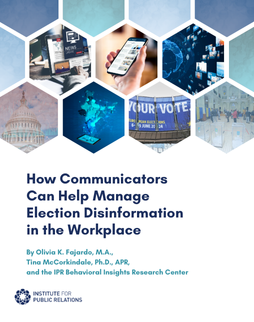I have a blog post published May 29th at CommPro.BIZ, “Seeing Is Believing — Why PR People Should Take Infographics More Seriously.” I make two related arguments. I contest that PR people generally have fallen behind other marketing and analytical disciplines in their understanding and use of big data, both for understanding challenges and for constructing effective advocacy. At the same time, though in a radically different realm, PR fails to take seriously the use of infographics in responsible, effective, and ethical ways.

The same day my blog post appears,three other items cross my desktop. First, the 10,000 Words blog posts information about a new Master’s degree program at University Rey Juan Carlos of Madrid focusing on “investigative reporting, data journalism and visualization.”
Second, I get an email from an executive at Booz|Allen|Hamilton asking me to participate in a research project they are conducting “about the future of public relations research, measurement, and evaluation” in conjunction with the 2012 AMEC European Summit on Measurement.
Third, Fast Company reports on a new technology product, inArticle, an “analytic news visualizer” developed by an New York University graduate student, Jeremy Scott Diamond, that transforms many of the standard news and social media analytics into visualizations that are not only cool looking but actually communicate insight effectively.
All that adds up to technology, services, consulting, journalism, and academic heavyweights demonstrating mastery and intelligence in big data analysis, visualization — and strategic communication.
If PR people and PR agencies expect to be relevant in the next decade — in the context of being strategic players in marketing, advocacy, and policy decision-making (and not just being tacticians) — the profession has to quit paying lip service to “research” as one of the four steps to PR and start making serious technology investments, hires of trained people, and partnerships with academics and enterprises that are already using big data and visualization to establish credibility and critical insight.
In the coming years, strategic communications businesses and careers are going to be more exciting and demanding than ever. Those businesses and careers, however, may not be in “public relations.” Social media tactics will not kill off traditional public relations, but inadequate depth and expertise in digitally-based analysis and presentation may.
Franklin Walton, Ph.D. consults and teaches long-form PR and data-driven communications. He blogs at textscape.info.




I am Public Relations practitioner, but in my area small scale businesses always asked for business plan to help them start up business. I would want to suggest good exchange of ideas in this directtion.